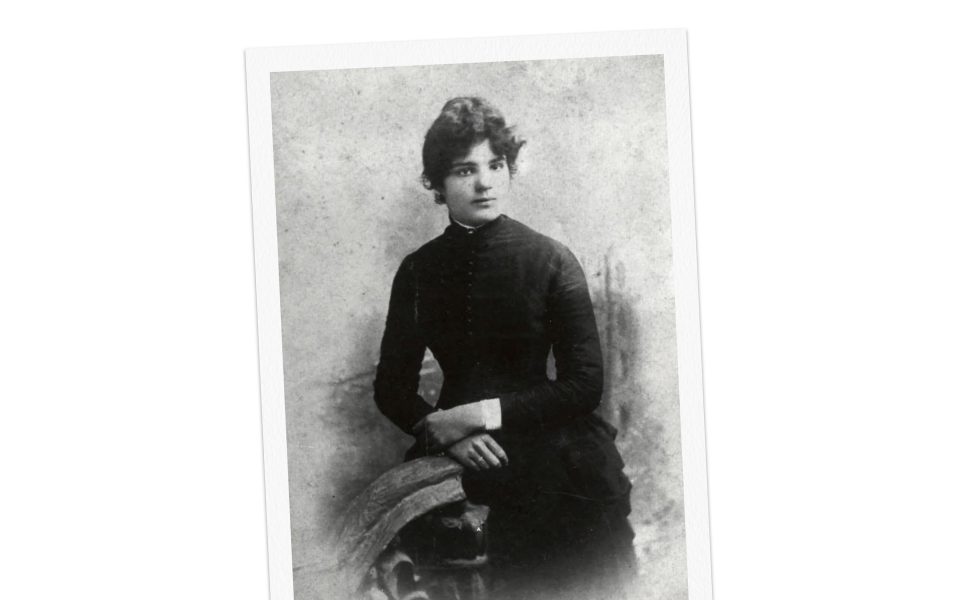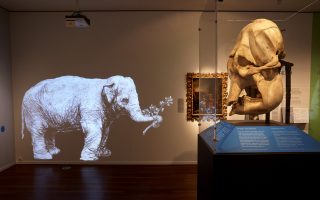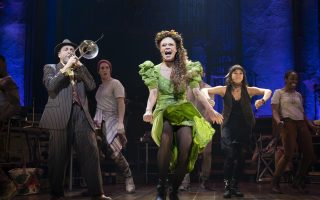Overlooked no more: Hettie Anderson, sculptors’ model who evaded fame

Her likeness has been rendered atop monuments and on gold coins. In Augustus Saint-Gaudens’ towering, gilded equestrian sculpture honoring Civil War general William Tecumseh Sherman at Grand Army Plaza in Manhattan, she represents the winged Greek goddess Victory striding in sandals ahead of his horse, one arm outstretched. But although her image can be found in multiple places around the United States, little is known about the model, Hettie Anderson.
What is known is that she surfaced in Manhattan in the 1890s, a light-skinned African American who joined its cultural scene after escaping bitter prejudice in the South. Sculptors and painters sought to portray what one newspaper article described as her “creamy skin, crisp curling hair and warm brown eyes.”
But Anderson received less media attention than some of her contemporaries, like models Evelyn Nesbit and Audrey Munson, who became enmeshed in murder and sexual assault scandals. And over time Anderson’s name became disassociated from the celebrated artists who hired her.
By the time she died, on Jan. 10, 1938, at the age of 64, she was mostly forgotten by the world at large.
Her story remained in obscurity until the 1990s, when researcher Willow Hagans, who is also Anderson’s cousin, began publishing scholarly articles about her that Hagans wrote with her husband, William E. Hagans.
The couple first learned about Anderson in about 1980 from William Hagans’ grandmother Jeanne Wallace McCampbell Lee. They learned that although Anderson was African American, her light skin led census takers to list her as white. (It is not clear what she told people about her race.)
There is no evidence that Anderson marketed herself, despite her high-profile commissions.
“She was a quiet, purposeful person who was very professional and respected as a powerful entity – which resulted in beautiful artworks,” Willow Hagans said by phone.
Anderson was born Harriette Eugenia Dickerson in 1873 in Columbia, South Carolina. Her mother, Caroline Scott, was a seamstress. Her father is listed in documents as Benjamin Dickerson.
Research, including findings by her cousin Amir Bey, shows that before the Civil War the government designated Anderson’s family “free colored persons”; they owned land and earned wages.
But the brutal enforcement of Jim Crow laws in the South and financial hardship eventually drove Anderson and many of her relatives northward. She and her mother rented an apartment in Manhattan on Amsterdam Avenue at 94th Street.
Anderson – it is not known why she used that name – sometimes worked as a clerk and seamstress while taking classes at the Art Students League, the storied nonprofit school in Manhattan. She also spent weeks at a time at sculptors’ country studios, including Chesterwood, on Daniel Chester French’s estate in Stockbridge, Massachusetts.
Soon artists were approaching her to pose for them, and newspapers praised her “heroic” appearance.
“There is nothing in Greek sculpture finer than her figure,” The New York Journal and Advertiser wrote in 1899, adding, “Her figure is imposing, her carriage queenly, and she is famous for her perfect foot.”
“Because she was so much in demand,” Willow Hagans said, “she could pick and choose which artists she wanted to pose for.”
Anderson’s likeness can be seen in French’s sculptures at Congress Park in Saratoga Springs, New York; in cemeteries in northern New Jersey and Concord, Massachusetts; and in entryways to the St. Louis Art Museum and Boston Public Library.
Sculptor Adolph Alexander Weinman rendered her as a toga-clad goddess for Civic Fame, which crowns the New York City government skyscraper now called the David N. Dinkins Manhattan Municipal Building.
Artist John La Farge rendered her as a willowy Athenian deity for a mural at Bowdoin College in Maine. In an etched portrait by Swedish painter Anders Zorn, she appears tucked behind a haggard Saint-Gaudens during a modeling session.
She was a favorite of Saint-Gaudens, who called her “the handsomest model I have ever seen.”
“I need her badly,” he once wrote to a friend. In a draft of his memoir, he wrote that he depended on her stamina for “posing patiently, steadily and thoroughly in the spirit one wished” – in his case in swirling togas atop monuments and on gold coins.
In 1908, soon after Saint-Gaudens’ death, Anderson copyrighted his bronze bust of her. His family wanted to make replicas for sale, but she refused, insisting that it would remain most valuable as “the only one in existence,” and she lent it to museums.
In 1910, at the close of a Saint-Gaudens retrospective in Indianapolis, workers accidentally shipped the bust to the sculptor’s family. Anderson wrote a scathing letter to the museum’s director. “You have committed a grave error in allowing that Bust of mine to pass from your care,” she wrote, and sending it “just where I did not wish it to go.”
In 1990, the Haganses bought the Saint-Gaudens bust at Christie’s auction house in New York.
Saint-Gaudens’ son, Homer, who managed his father’s artwork after the sculptor’s death, was infuriated by Anderson’s defiance and tried to conceal her association with his father.
In the late 1910s, as modeling opportunities faded, Anderson worked as a classroom attendant at the Metropolitan Museum of Art. By then the museum owned a Victory cast as well as “Mourning Victory,” French’s marble likeness.
By the 1920s, Anderson retired, in declining health.
Her death certificate listed her profession as “model.” She and her mother are buried in unmarked graves in a mostly white cemetery in Columbia, near the remains of President Woodrow Wilson’s family members and Confederate memorials.
Last year, a label describing the Victory cast at the Met’s 150th anniversary show referred to Anderson as “a Black woman who posed for many artists in New York.” Victory casts can also be found at the Carnegie Museum of Art in Pittsburgh, the Toledo Museum of Art in Ohio and Arlington National Cemetery. In 2017, another Victory sold for more than $2 million at Christie’s.
Chesterwood owns plaster casts of her right foot and right hand. Anderson’s images have also circulated on the market in the form of Zorn’s etchings and Saint-Gaudens’ coins; in June, a 1933 version of his $20 gold piece sold for almost $19 million at Sotheby’s in New York.
This fall, at Bowdoin’s museum, Anderson’s Athenian incarnation will loom above an exhibition titled “There Is a Woman in Every Color: Black Women in Art.” In 2023, artworks that Anderson inspired will be featured in the American Federation of Arts’ traveling show, “Monuments and Myths: The America of Sculptors Augustus Saint-Gaudens and Daniel Chester French.”
Late one afternoon a few months ago, Thayer Tolles, the Met’s curator of American paintings and sculpture, gazed at the Sherman monument at Grand Army Plaza. “The attention to detail – it’s just thrilling,” she said.
The light of the setting sun gleamed on the statue’s gilded fingertips and wing feathers of a model in her prime.
[This article originally appeared in The New York Times.]






